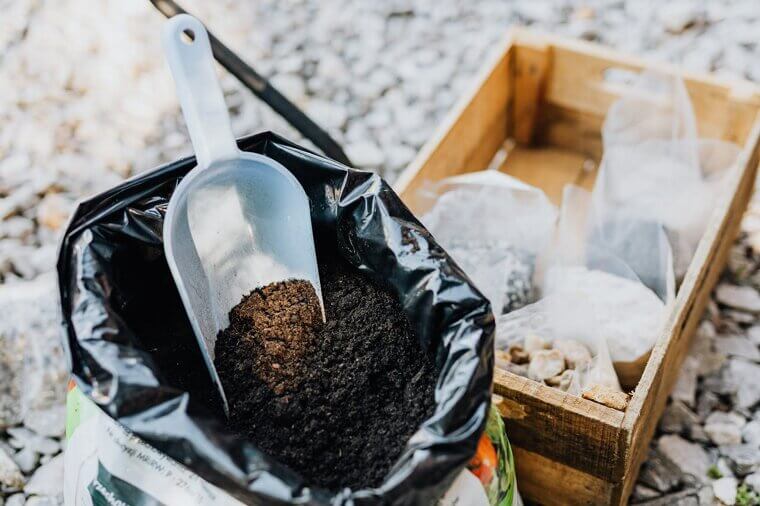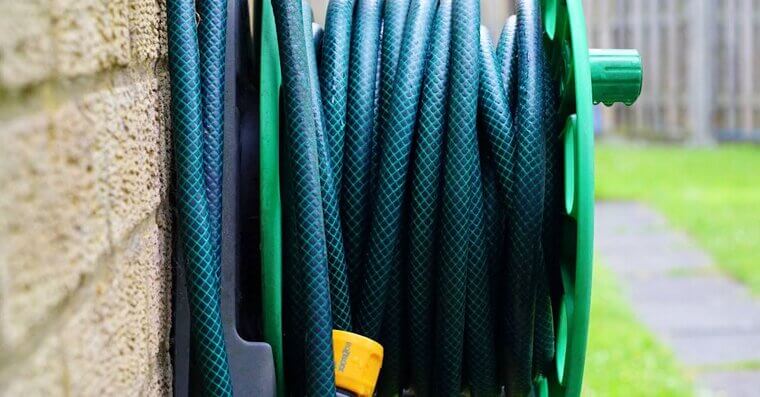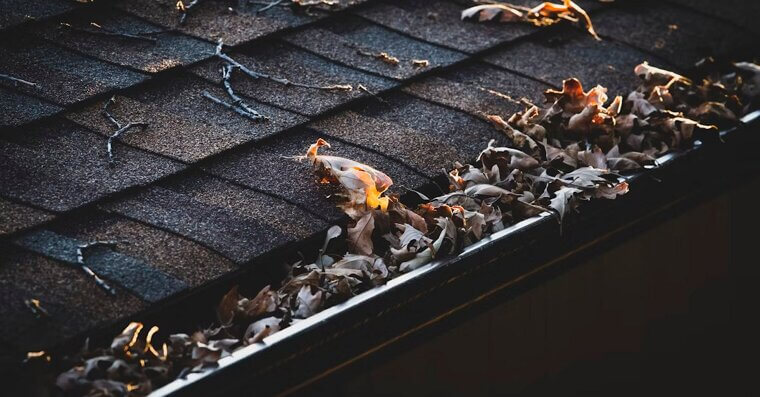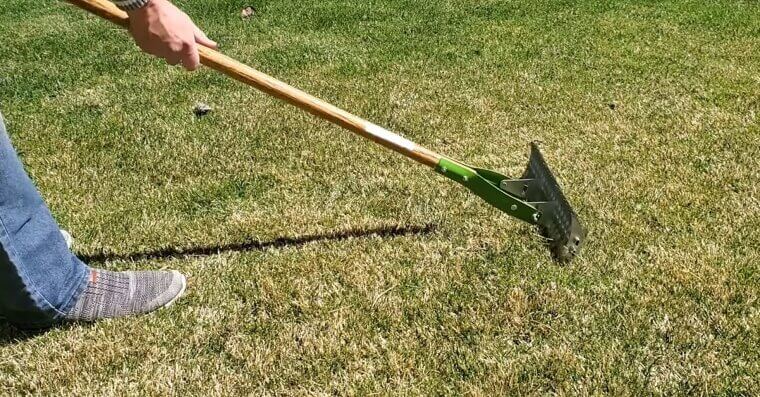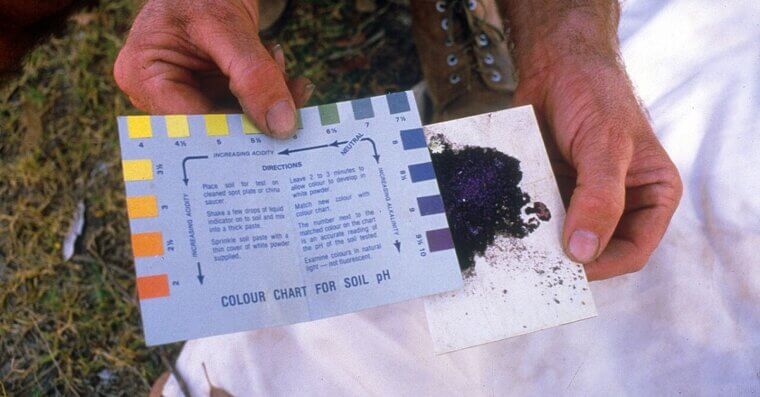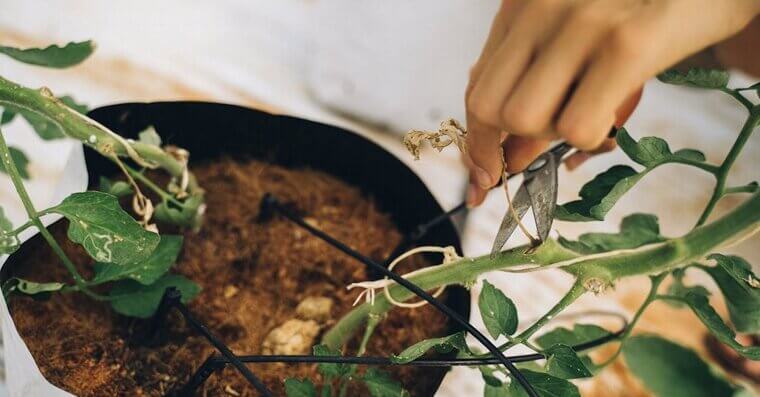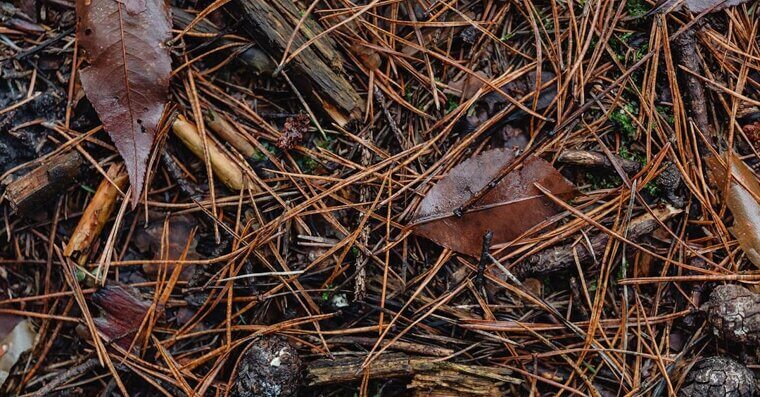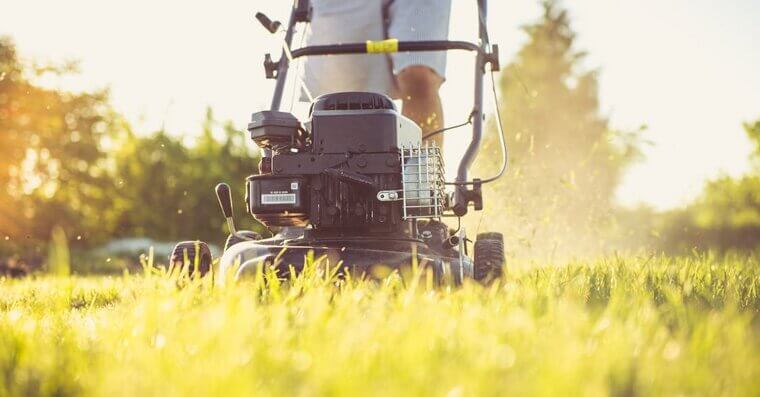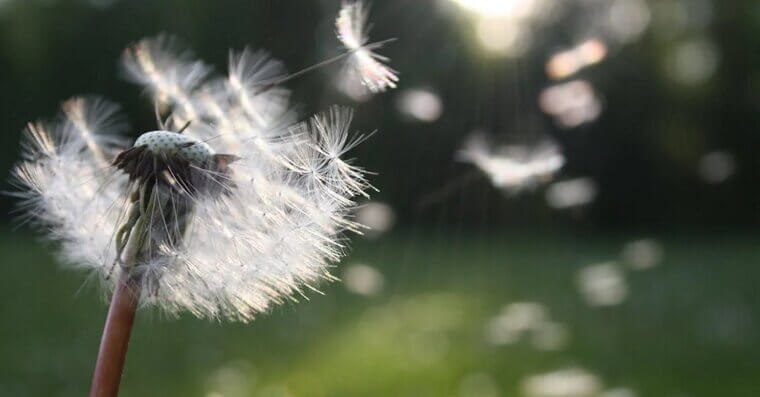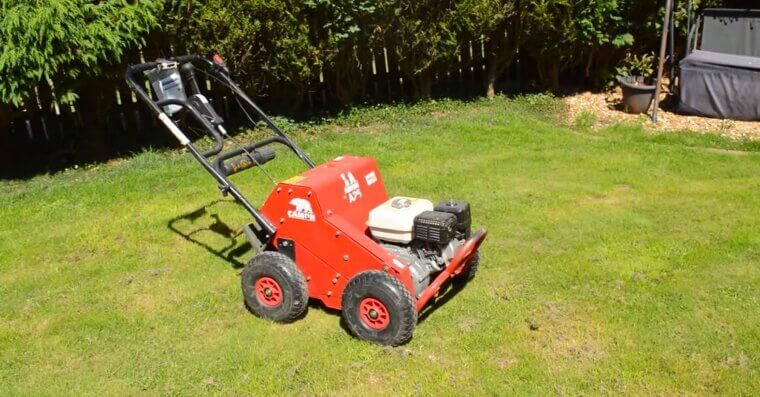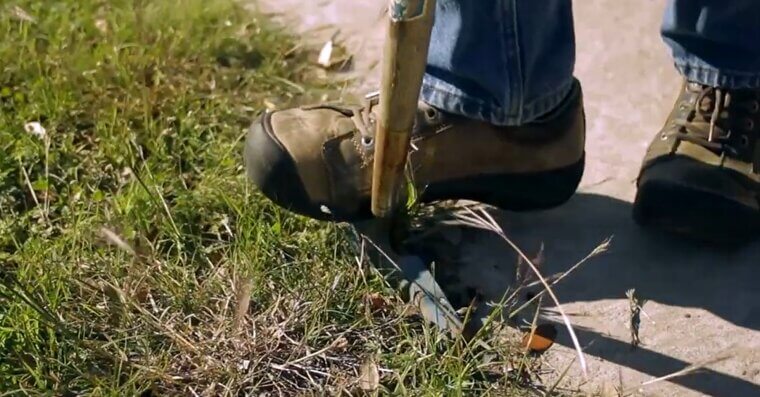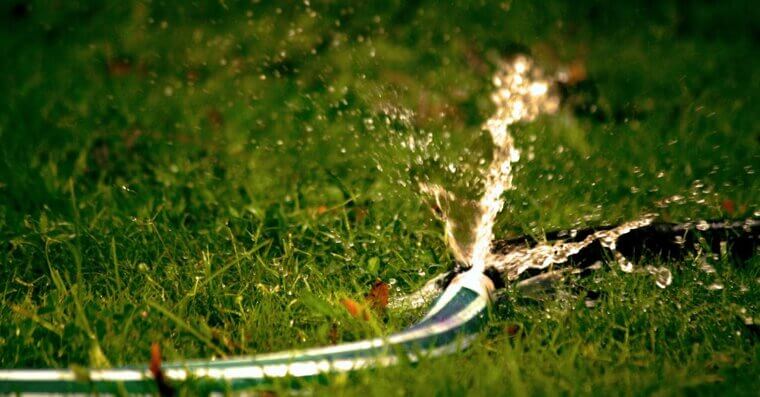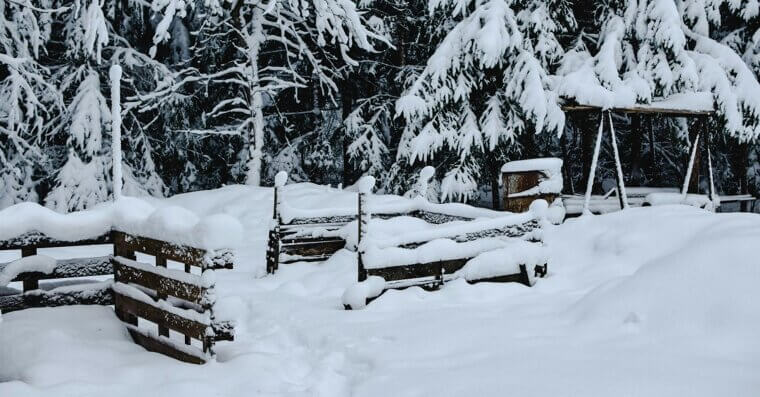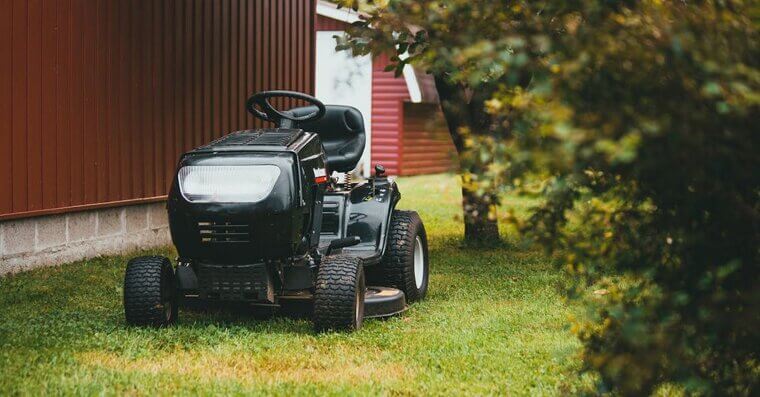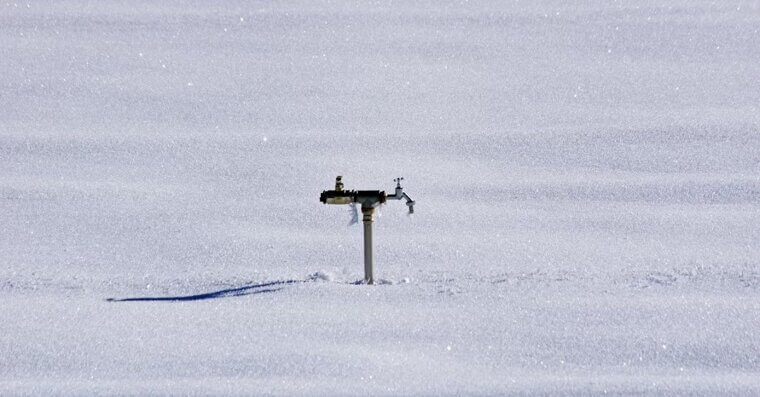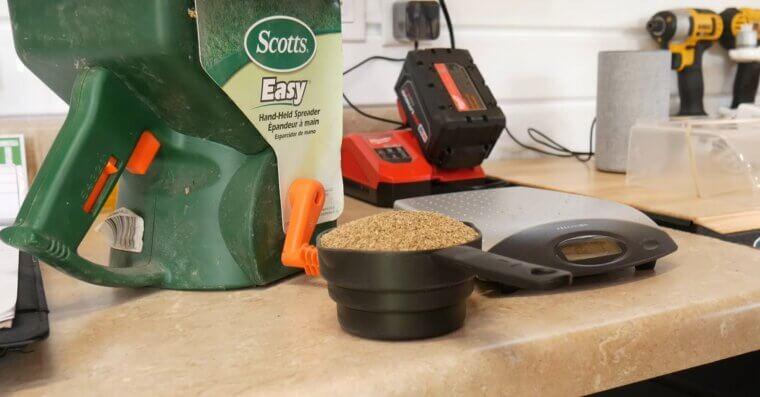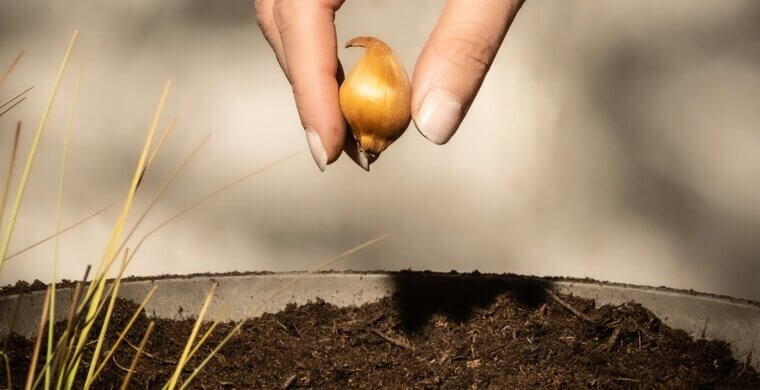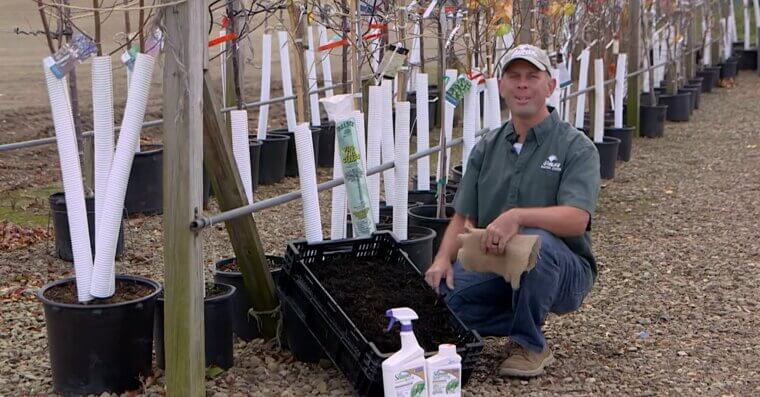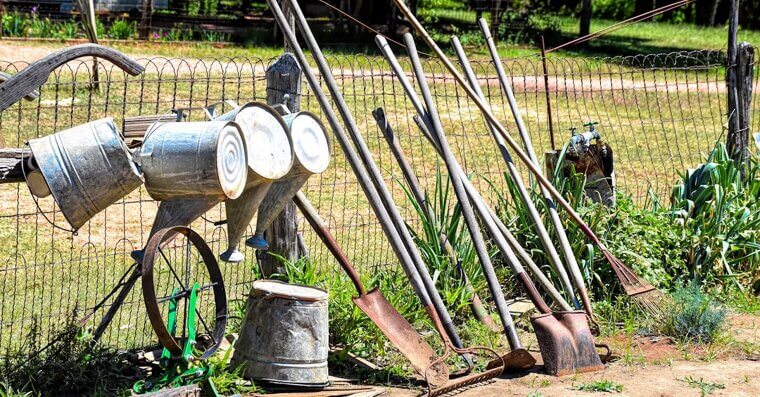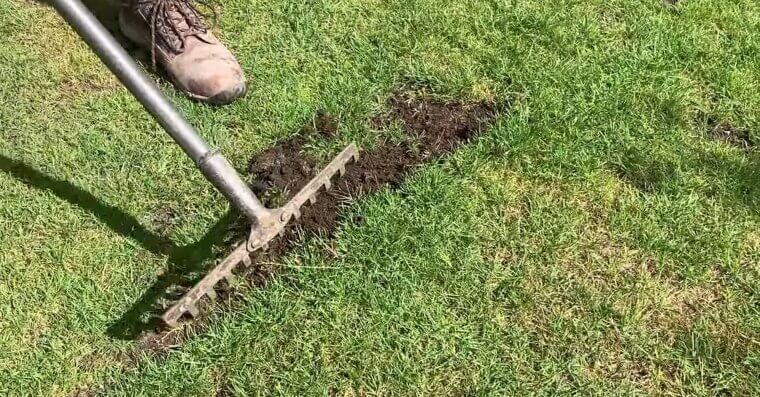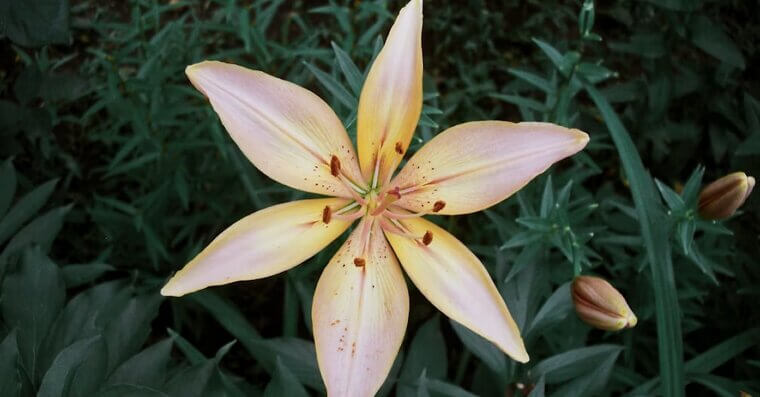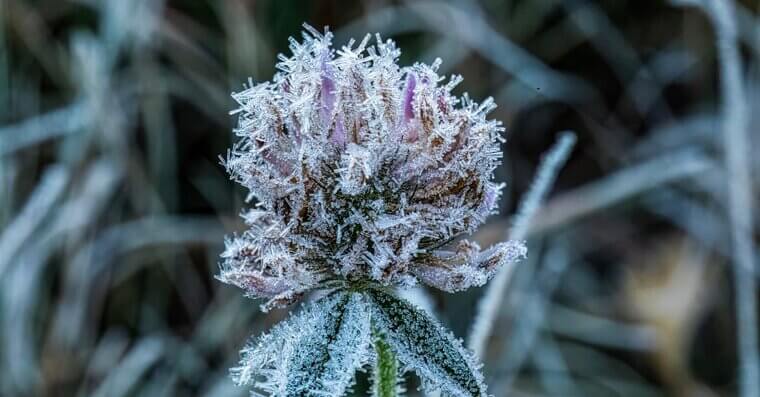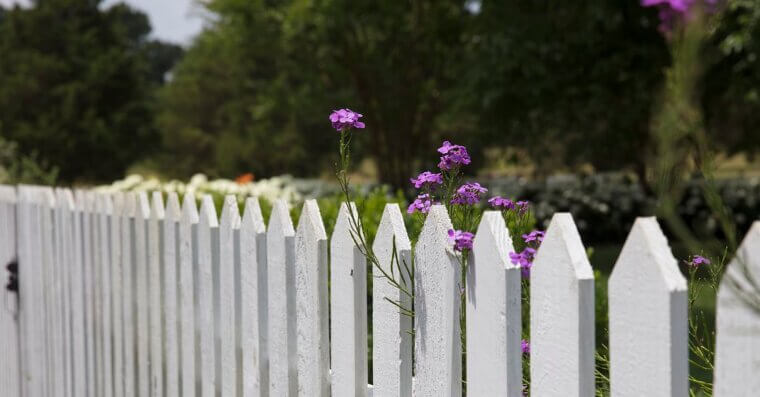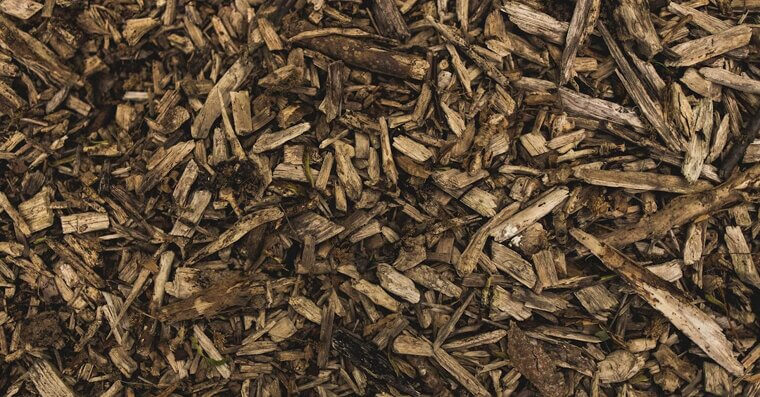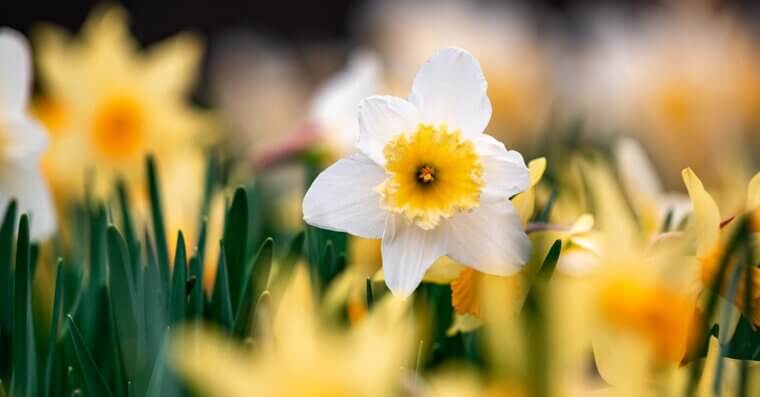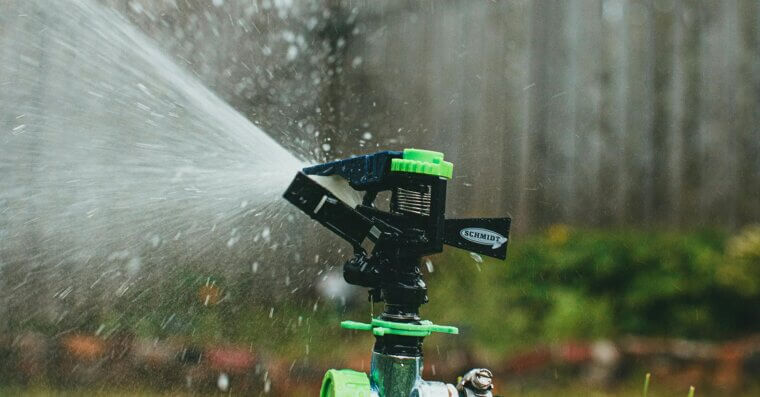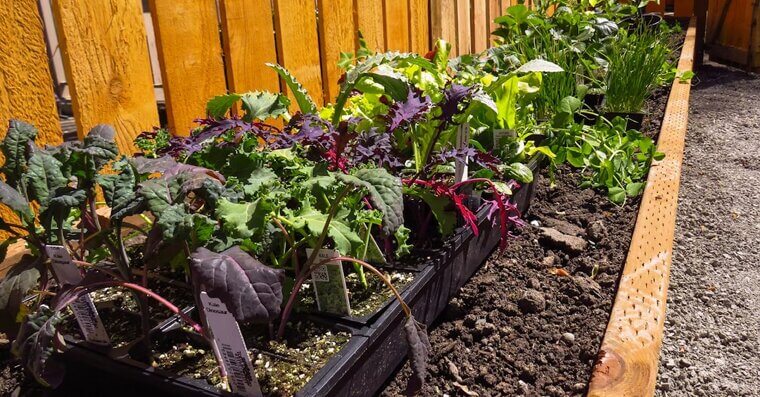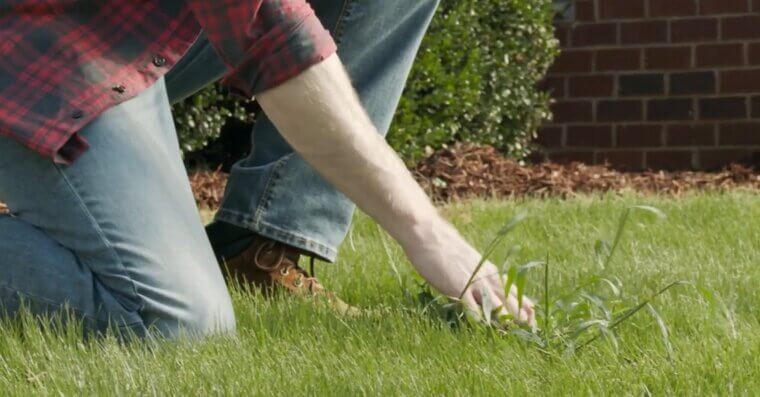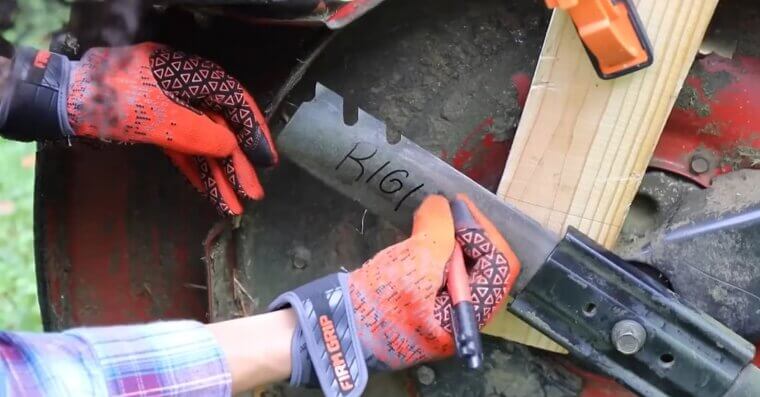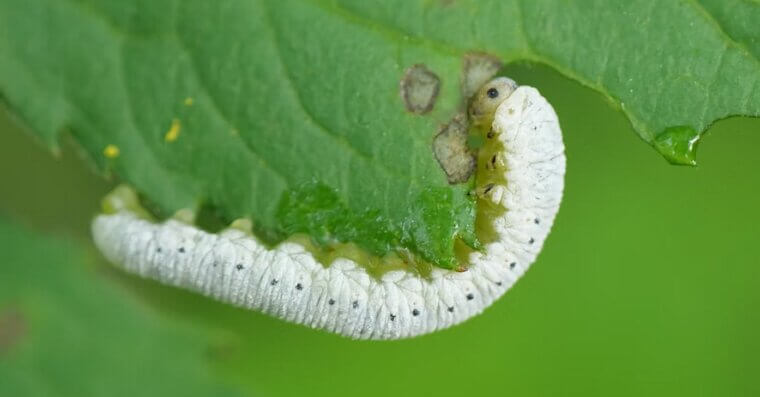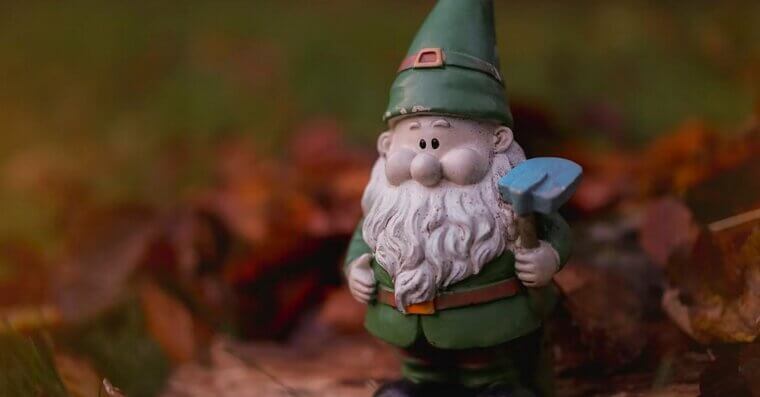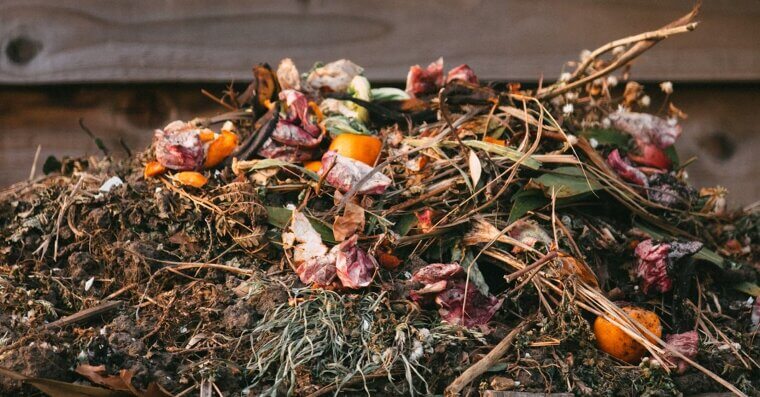Fertilize the Lawn
Fall fertilizing is like giving your lawn a healthy last meal before it gets (to borrow a Star Wars concept) frozen in carbonite. The nutrients strengthen the root system, making it tougher against the cold. Use a slow-release fertilizer designed for fall, which helps grass store food and come back greener in spring.
Winterize Garden Hoses
Don’t leave hoses outside filled with water once frost starts showing up. The water inside can freeze, expand, and crack the hose. Drain them completely, disconnect them from outdoor spigots, and coil them neatly for storage.
Clear Gutter Spouts
Nobody enjoys scooping leaves out of gutters, but it’s crucial before winter sets in. Clogged gutters cause water to back up, freeze, and damage your roof or foundation. Take an afternoon to clean them out and make sure spouts are directing water away from the house.
Rake Out Thatch
Thatch is that layer of dead grass and roots that builds up just above the soil. Too much of it can choke your lawn, keeping water and nutrients from reaching your grass. A thatch rake or power dethatcher can break it up.
Test Your Soil
Fall is a great time to check your soil’s pH and nutrient levels. Grab a simple test kit from the garden center and see what it says. Knowing what your soil is missing helps you fertilize smarter. If the pH is off, lime or sulfur can help balance it before spring growth kicks in.
Prune Plants
Fall is the perfect time to give your shrubs and trees a trim. Cutting away dead branches not only makes them look tidier but also prevents damage from heavy snow or ice later. Just don’t prune too aggressively - plants still need energy reserves to survive winter.
Mulch Leaves for Fall Grass Fertilizer
Instead of bagging all those fallen leaves, mulch them with your mower. Tiny leaf pieces act as a natural fertilizer, enriching the soil with organic matter. It’s good for your lawn and saves you from endless raking. Just make sure the leaves are shredded fine enough to break down easily - big clumps can smother the grass instead of feeding it.
Cut the Grass Short
Before the first frost, give your lawn a final trim. Cutting it slightly shorter - around 2 inches - helps prevent matting under snow. Long grass can invite disease and pests during the cold months. Don’t cut it overly much, though, grass still needs some length to photosynthesize.
Control Weeds
Weeds like dandelions and clover don’t stop just because summer’s over. In fact, fall is the best time to fight them because they’re storing up nutrients for winter. A weed treatment targets their roots, making it harder for them to bounce back in spring.
Aerate the Soil
Compacted soil makes it hard for grass roots to absorb air, water, and nutrients. Aerating in the fall gives roots the breathing room they need before winter. You can rent a core aerator or hire a pro for the job, it’s up to you.
Edge the Lawn
A clean edge around your lawn makes a big difference heading into winter. Use a trimmer or edging tool to cut back grass along sidewalks, driveways, and flower beds. Not only does it look sharp, but it also keeps grass from creeping into unwanted spots when it wakes back up in spring.
Water the Lawn
Even though temperatures are cooling, your lawn still needs regular water to stay healthy. Fall rains help, but don’t count on them alone - make sure your grass gets at least an inch of water a week. Keeping it hydrated now strengthens the roots, which means a thicker, greener lawn in spring.
Get Your Property Ready for Snow
Before the first flakes fall, check your snowblower, stock up on ice melt, and mark driveway edges with stakes if needed. Move garden tools, toys, and furniture out of the way. A little organizing now makes winter cleanup smoother and less stressful.
Winterize Your Riding Mower
If you have a riding mower, now’s the time to prep it for winter storage. Drain old fuel, clean the mower deck, sharpen blades, and disconnect the battery. A protective cover helps keep dust and moisture at bay. Skipping this step often leads to frustrating repairs and sometimes an emptying of the wallet come spring.
Winterize Your Sprinkler System
Sprinkler systems are notorious for freezing damage if not drained properly. Use an air compressor or hire a professional to blow out the lines, ensuring no water is left to freeze. Insulate any above-ground pipes for added protection. Skipping this step often means cracked pipes or sprinkler heads in spring, and no one wants that.
Reseed Late in the Growing Season
Fall is actually one of the best times to overseed your lawn. Cooler temperatures and a lot of moisture help grass seed germinate without the stress of summer heat. Choose a grass blend suited to your region, and spread it in thin patches.
Save Your Tender Bulbs
Plants like dahlias, gladiolus, and cannas won’t survive harsh winters in the ground. Dig them up before the frost really settles in, gently shake off excess soil, and store them in a cool, dry place. A box with peat moss or sawdust works well.
Protect Young Trees
If you’ve planted new trees or shrubs this year, give them some extra protection. Wrap the base with tree guards or burlap to keep rodents and deer from nibbling during the winter. Mulching around the base also helps insulate roots from extreme cold.
Store Garden Tools Properly
Don’t just toss your tools in the shed and forget about them until spring. Clean off dirt, sharpen blades, and put oil on metal parts to prevent rust. Wooden handles last longer with a quick coat of linseed oil. Store everything neatly so it’s ready to go next year.
Check for Bare Patches
Fall is the perfect season to tackle those ugly bald spots in your lawn. Loosen the soil, sprinkle in some seed, and keep it lightly watered until germination. The cooler temps make for easier establishment. By spring, you’ll be glad you didn’t leave those patches untouched - nothing beats seeing a full, lush lawn in the sun.
Trim Perennials
Cutting back your perennials in fall helps keep disease and pests at bay. Plants like hostas, peonies, and daylilies benefit from being trimmed down before the cold really sets in. Not only does this tidy up your garden, but it also allows the plant to focus its energy on root survival
Protect Delicate Plants
Not all plants can handle frost, even hardy perennials. Consider covering sensitive ones with burlap or frost cloths when the first freezes are predicted. You can also move container plants indoors or to a sheltered spot.
Clean Outdoor Furniture
Before you pack up or cover outdoor furniture, give it a good cleaning. Dirt, mildew, and moisture left behind can really shorten its lifespan. Wash cushions, wipe down frames, and store everything dry. If you must leave them outside, use weatherproof covers.
Check Fences and Gates
Winter winds and snow can do a number on weak fences. Take a walk around your property and check for loose boards, leaning posts, or squeaky gates. Fixing small issues now prevents big headaches later.
Spread Fall Mulch
A layer of mulch around shrubs, trees, and perennials helps insulate roots against freezing temperatures. It also retains soil moisture and prevents weeds. Just don’t pile it up against the trunks—that can invite pests and rot. A nice, even layer does the trick.
Plant Spring Bulbs
Want a cheerful spring garden? Fall is the time to plant bulbs like tulips, daffodils, and crocuses. The cool soil lets them establish roots before winter, and they’ll pop up beautifully once the snow melts. Just remember to plant them deep enough.
Check Irrigation Timers
If you’ve been running automatic sprinklers, make sure the timers are shut off for winter. Leaving them on risks wasting water - or worse, damaging pipes when the system freezes and costing you more money.
Clean Up Garden Beds
Dead annuals and spent vegetables should be pulled up and composted before winter. Leaving them in place can harbor pests and disease. Clean, clear beds are easier to work with in spring and healthier for your soil overall.
Apply a Pre-Emergent Weed Treatment
If crabgrass and other weeds were a problem this year, applying a pre-emergent in fall can help break the cycle. These treatments stop seeds from germinating, which means fewer issues when spring rolls around.
Sharpen Your Mower Blades
Even though mowing season is winding down, sharp blades matter for that last cut. Dull blades tear grass instead of cutting it cleanly, making it more vulnerable to disease. Sharpen the blades now, and they’ll be ready for storage and spring use.
Inspect for Pests
Before winter hits, check your lawn and garden for signs of grubs, voles, or other pests. These critters can cause major damage under snow cover when you can’t see what’s happening. Treating infestations now helps prevent a surprise of dead patches or chewed-up plants once the snow melts.
Protect Outdoor Faucets
Don’t forget your spigots! Unprotected faucets can freeze and burst, leading to costly water damage. After disconnecting hoses, cover the faucets with insulated covers. They’re cheap, easy to install, and make a big difference in preventing freeze damage.
Store Lawn Decorations
Garden gnomes, solar lights, and decorative stakes don’t hold up well against winter snow and ice. Bring them indoors or into the shed to keep them in good shape. Not only will they last longer, but you’ll also avoid the hassle of digging broken pieces out of the yard in spring.
Spread Compost
Fall is a perfect time to spread compost across your lawn and garden beds. It enriches the soil, adds organic matter, and helps improve drainage. Over winter, it slowly breaks down and becomes a natural boost for spring growth.
Review and Plan for Spring
Once you’ve finished doing everything you need to protect your lawn, take a few minutes to reflect. What worked this year? What didn’t? Maybe you want more flowers, a veggie patch, or better shade coverage. Jot down ideas while they’re still fresh.

